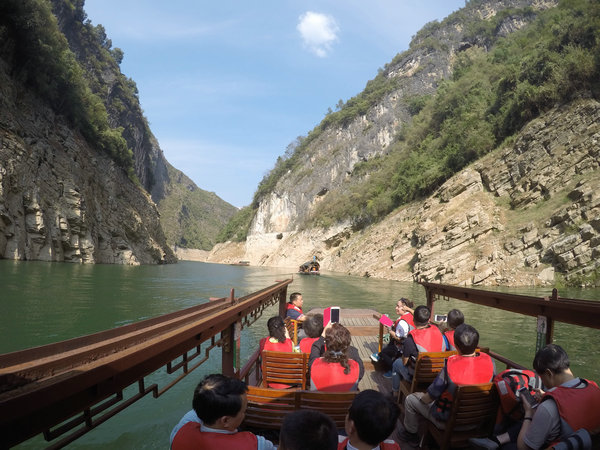Go with the flow
 |
|
Visitors take a wooden boat around the Xiaoxiaosanxia in Wushan county, Chongqing.[Photo by Yang Feiyue/ China Daily] |
We trudged up a flight of stairs rising up a slope.
"You don't have to walk up here in winter," a guide explained, pointing to a tide marker.
"The water rises in winter, so you can hop off the ship there."
Levels are controlled by the massive flood-control and power-generation project, the Three Gorges in Yichang.
The settlement was cable-car accessible until the dam made it a separate island.
The 1,900-year-old Ghost City is perched on Minshan Mountain.
Legend says the city takes its name from Eastern Han Dynasty (AD 25-220) necromancers Yin Changsheng and Wang Fangping, who made a pilgrimage to Minshan to practice Taoism and became immortals. The surnames Yin and Wang as a portmanteau sound like "King of Hell" in Chinese. So people began to call Fengdu Ghost City.
Beyond that coincidence, some temples and shrines depict people being tortured for this life's sins in the underworld.
It's a synopsis of the Chinese conception of karma.
The city bears Buddhist, Confucian, Taoist and even Hindu influences.
Our next port of call was Shibaozhai in Zhongxian county.
We tottered across a suspension bridge's joggling wooden boards to the wooden building that stands in defiance of the steepness of its foundation's slope.
The 12-story structure is said to be the largest of its kind in China.
We also visited Fengjie county's Baidi City in Chongqing.
The "city of poets" was built in AD 25. Many ancient literati left numerous literary inscriptions, including Tang Dynasty (618-907) luminaries Li Bai and Du Fu.














